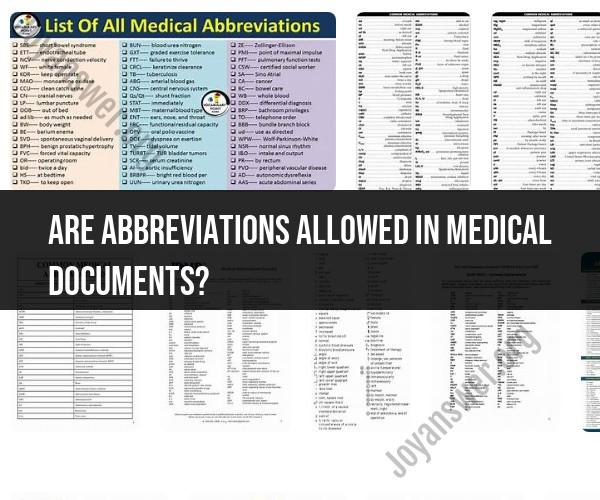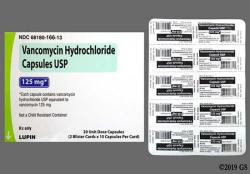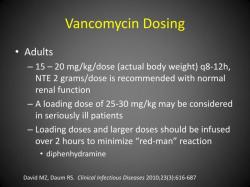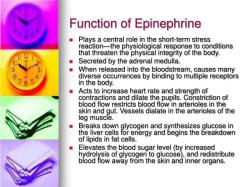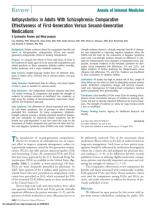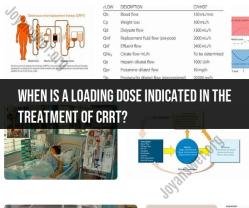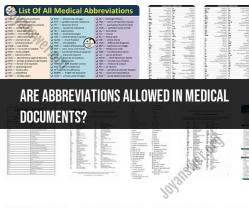Are abbreviations allowed in medical documents?
Yes, abbreviations are allowed and commonly used in medical documents, but their usage should follow specific guidelines to ensure clarity and accuracy. Here are some guidelines for using abbreviations in medical documents:
Standardization: It's essential to use standardized medical abbreviations that are widely accepted and recognized within the medical community. Avoid creating your own abbreviations.
Avoid Ambiguity: Avoid using abbreviations that could be misinterpreted or lead to confusion. For example, "QD" might mean "once a day" or "every day" depending on the context, so it's better to write out "once daily" or "every day" for clarity.
Patient Safety: Be cautious when using abbreviations that could lead to patient safety issues. Some abbreviations, such as "U" for unit and "IU" for international unit, can be easily confused. It's often recommended to write them out in full.
JCAHO's "Do Not Use" List: The Joint Commission on Accreditation of Healthcare Organizations (JCAHO) has a list of "Do Not Use" abbreviations and symbols that should be avoided to prevent medication errors and other safety issues.
Context Matters: The context in which an abbreviation is used matters. For example, "SOB" can mean "shortness of breath" or "son of Bob" depending on the context.
Documentation Policies: Medical facilities often have their own policies and guidelines regarding the use of abbreviations. Always follow your organization's documentation policies.
Consistency: Be consistent in your use of abbreviations throughout the document. If you choose to abbreviate a term, use the abbreviation consistently rather than switching between the full term and the abbreviation.
Legibility: Ensure that your handwriting or electronic records are legible. Illegible abbreviations can lead to misunderstandings and errors.
Charting: In handwritten records, it's crucial to ensure that abbreviations are clear and easy to read. Sloppy handwriting can lead to misinterpretations.
Medication Orders: When writing medication orders, use the complete drug name rather than abbreviations to prevent errors.
Review and Edit: Always review and edit your medical documents for accuracy and clarity, especially when abbreviations are used.
Remember that the primary goal of medical documentation is to provide clear and accurate information to healthcare professionals for patient care. When using abbreviations, ensure that they enhance, rather than hinder, effective communication and patient safety.
Abbreviations are commonly used in medical documents to save time and space. However, there are some guidelines that should be followed when using abbreviations in medical records.
When Are Abbreviations Allowed?
Abbreviations are generally allowed in medical documents when they are well-known and widely accepted. For example, the abbreviation "CBC" for "complete blood count" is commonly used and understood by healthcare professionals.
Abbreviations should not be used in the following situations:
- When they are not well-known or widely accepted
- When they could be misinterpreted
- When they are used to describe important or critical information
- In documents that are intended for patients or the public
Medical Documentation Rules for Using Abbreviations
When using abbreviations in medical documents, it is important to follow these rules:
- Use abbreviations only when they are necessary.
- Define all abbreviations the first time they are used in a document.
- Use abbreviations consistently throughout a document.
- Avoid using abbreviations in the following:
- Patient names and other identifying information
- Medication orders
- Laboratory results
- Discharge instructions
- Documents that are intended for patients or the public
Navigating the Use of Abbreviations in Healthcare Records
If you are unsure whether or not to use an abbreviation in a medical document, it is best to err on the side of caution and avoid using it. You can always consult with a more experienced healthcare professional if you have any questions.
Here are some additional tips for navigating the use of abbreviations in healthcare records:
- Be familiar with the abbreviations that are commonly used in your field of practice.
- Use a list of approved abbreviations if one is available.
- When using abbreviations, be sure to define them clearly and consistently.
- If you are unsure about the meaning of an abbreviation, ask a colleague or supervisor.
By following these guidelines, you can help to ensure that the medical documents you create are clear, concise, and accurate.
